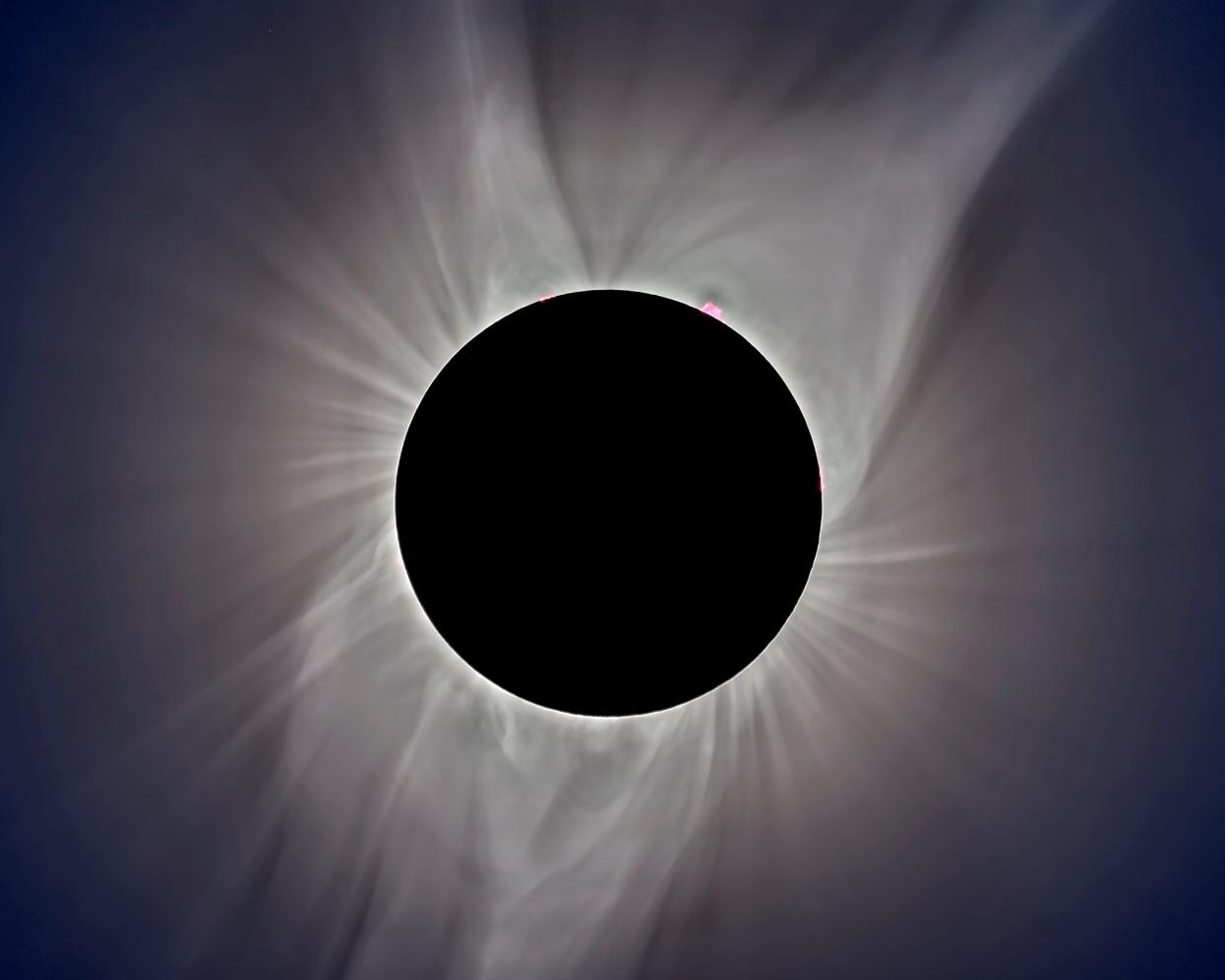Start looking now for a viewing spot for April's total solar eclipse

Imagine life as a human 10,000 years ago. At times, your survival might be severely threatened. Bad weather, wildfires, and animal stampedes, all can make life miserable.
Now, imagine a bountiful summer. Food is plentiful, your cave or hut protects you from wild animals and bad storms. But as you finish your afternoon meal, you notice something odd. The light seems different, muted, like a hazy sky. But, the sky is perfectly clear. Moment by moment, the sun’s light slowly fades. Animals start acting oddly, too. Birds began to roost in the middle of the day. Herd animals form circle groups as they do when they protect their young at night.
You squint at the sun and gasp. Half of it is missing! The light dims more as the sun disappears. Just as it vanishes, yellow petals seem to sprout from the central dark mass. Your tribe fears a demon or dragon is eating the sun. You start screaming, banging rocks together, anything to make as much noise as possible, hoping to scare away the beast.
Your efforts pay off as the beast slowly regurgitates the sun.
That’s how our distant ancestors may have reacted to a total solar eclipse. But we know better today. No dragon eats the sun. Rather, the moon occasionally slides in front of it, blocking its light for a few minutes.
You have a chance here in Oklahoma to witness this "moon dragon" devour our sun, and you might want to start planning now. A total solar eclipse occurs in Oklahoma on April 8, beginning at 1:44 p.m. with the final exit of the moon’s shadow from the state at 1:51 p.m. As it passes through Oklahoma, the moon’s shadow will accelerate from 1,680 miles per hour to 1,745 miles per hour. The path of totality cuts through the far southeast corner of Oklahoma after passing through the Dallas-Fort Worth Metroplex and heading northeast. Prime viewing sites may get crowded, so start planning your eclipse expedition. Visit tinyurl.com/3du4z57e for more specifics about the eclipse including a detailed map of the path in Oklahoma. More information, including weather prospects, can be found at eclipsophile.com/2024tse/.
And, if you miss this eclipse, you have a while to wait for the next one. We won’t get another total solar eclipse in Oklahoma until Aug. 12, 2045.
Closest to the sun
On Jan. 2, the distance between Earth and the sun reached a minimum, a condition known as perihelion. On that date, Earth sat a mere 91,403,445 miles from the sun. Earth’s opposite position, aphelion when we are farthest from the sun, occurs at 11 p.m. July 4. At that time, we’ll be a whopping 94,510,958 miles away from our star.
Planet Visibility Report
2024 begins with Mercury, Venus, and Mars in the morning, predawn sky. Venus remains in the morning sky all month. Mercury and Mars are tough early in the month, but both move farther from the sun during the first three weeks of January. Saturn and Jupiter both rise after sunset. New Moon occurs on the 11th with the full Moon following on the 25th.
This article originally appeared on Oklahoman: Parts of Oklahoma will be able to see April's total solar eclipse

